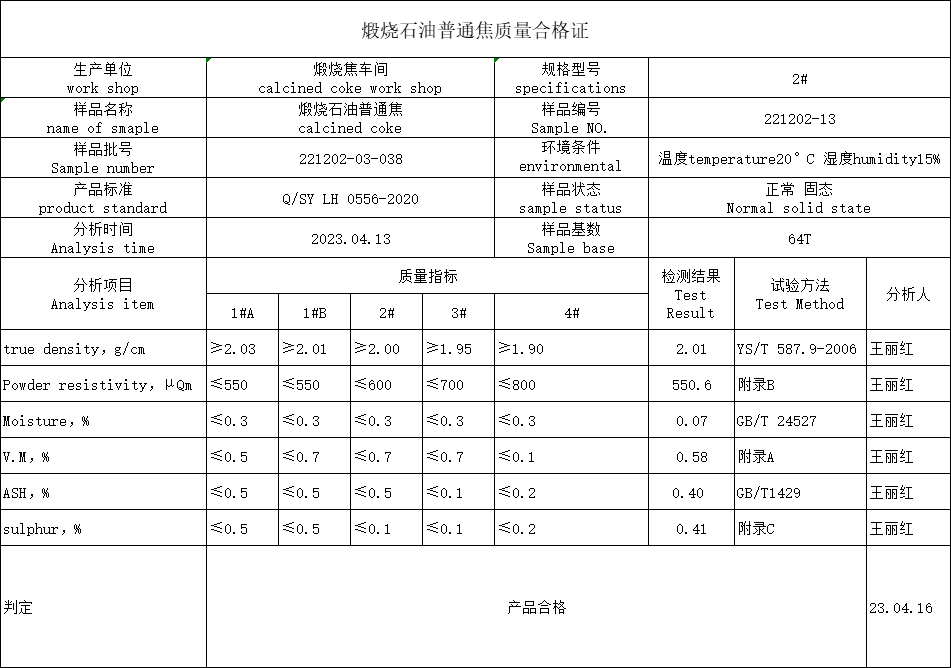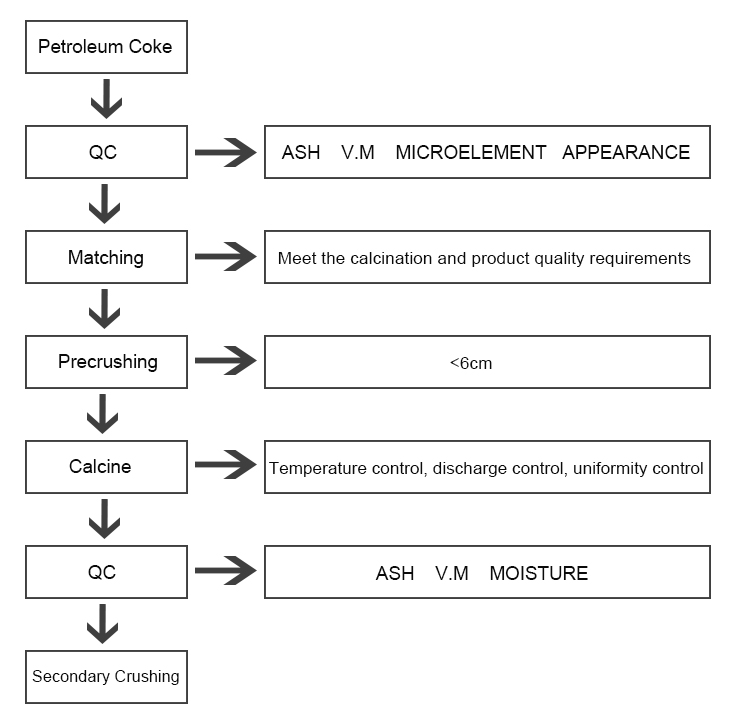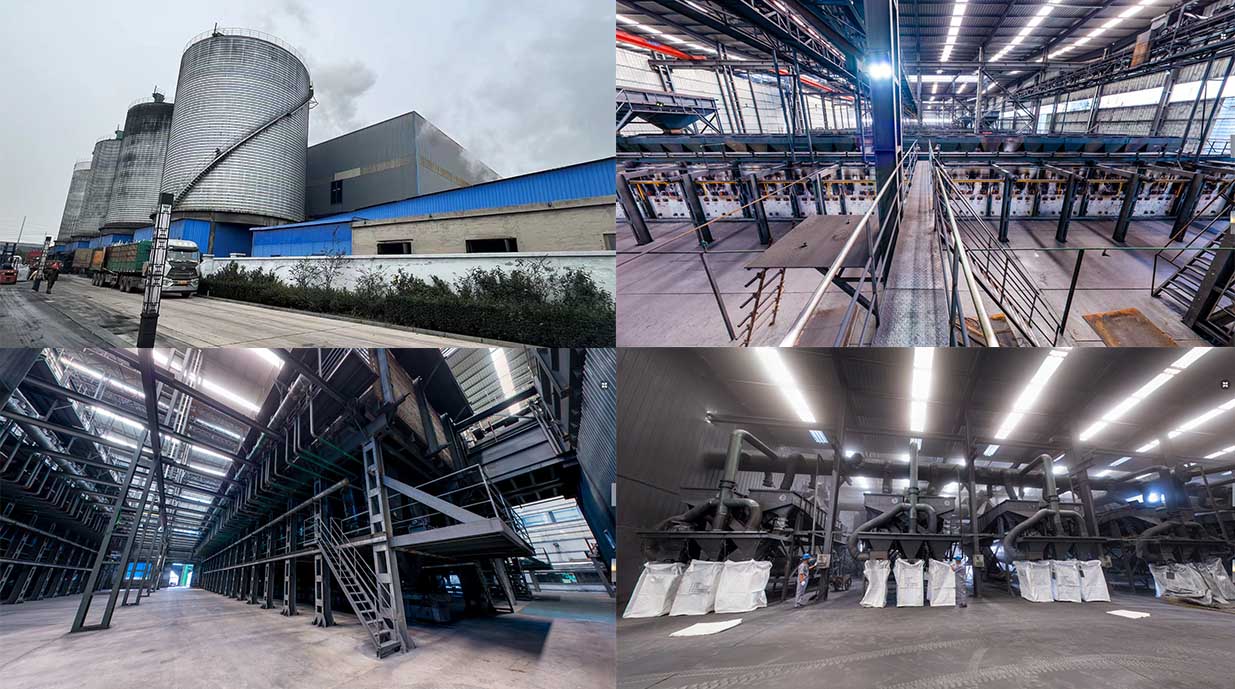Industry Analysis Report Of Calcined Coke
Calcined coke plays a crucial role in the production of graphite electrodes, which are essential components used in electric arc furnaces for various industrial processes. The use of calcined coke in graphite electrode production offers several benefits, including:
High carbon content: Calcined coke has a high carbon content, typically above 98%. This high carbon content is essential for producing high-quality graphite electrodes with excellent electrical conductivity. Graphite electrodes act as conductors of electricity and generate the high temperatures necessary for various industrial processes like steelmaking, silicon production, and more.
Low impurity levels: Calcined coke is carefully manufactured to have low impurity levels, particularly sulfur, nitrogen, and metals. Low impurity levels are critical for graphite electrodes as impurities can lead to undesirable reactions during electrode operation, affecting the performance and potentially contaminating the end product.
Consistent quality: Graphite electrode manufacturers rely on calcined coke as a primary raw material because of its consistent quality and uniform properties. Consistency is crucial for producing reliable and high-performance graphite electrodes, which ensures stable and predictable operations in electric arc furnaces.
High density and mechanical strength: The manufacturing process of calcined coke allows for the production of graphitized electrodes with high density and mechanical strength. This is essential to withstand the extreme heat and mechanical stresses experienced during the electrode's operation in electric arc furnaces.
Oxidation resistance: Calcined coke-based graphite electrodes possess excellent oxidation resistance, allowing them to endure high temperatures and harsh conditions without rapid deterioration. This property is vital for maintaining electrode integrity and prolonging their service life.
Low coefficient of thermal expansion: Graphite electrodes made from calcined coke exhibit a low coefficient of thermal expansion, meaning they experience minimal dimensional changes as they are exposed to varying temperatures during furnace operations. This property helps to prevent cracking and distortion of the electrodes.
Reduced breakage and consumption: The use of high-quality calcined coke in graphite electrode production results in electrodes with improved structural integrity and resistance to breakage. This leads to reduced electrode consumption during furnace operations, translating to cost savings for industrial users.
Sustainable and eco-friendly: Utilizing calcined coke in graphite electrode production can contribute to sustainability efforts, as calcined coke is often derived from petroleum coke, a byproduct of oil refining. By recycling petroleum coke into graphite electrodes, the industry helps reduce waste and promote a more sustainable manufacturing process.
In conclusion, the benefits of using calcined coke in the production of graphite electrodes include high carbon content, low impurity levels, consistent quality, excellent mechanical properties, oxidation resistance, low thermal expansion, reduced breakage, and sustainability advantages. These benefits collectively contribute to the overall performance and efficiency of graphite electrodes in various industrial applications.
Advantage to using Calcined Petroleum Coke in graphite electrode
In the production of graphite electrodes, calcined petroleum coke is indeed used, but it is not used in its calcined form. Instead, the raw petroleum coke undergoes further processing to convert it into graphite electrode material.
Here's the correct information regarding the usage of calcined petroleum coke in the production of graphite electrodes:
Raw Material: The primary raw material used in the production of graphite electrodes is petroleum coke, which is a carbon-rich solid derived from oil refining. This petroleum coke is often referred to as green coke due to its initial color.
Calcination: Before being used in the production of graphite electrodes, the green coke must go through a calcination process. During calcination, the green coke is heated to high temperatures (typically above 1200°C) in a controlled environment to remove volatile matter and moisture. This process transforms the green coke into calcined petroleum coke, which has higher carbon content and purity.
Mixing and Forming: Once the petroleum coke is calcined, it is then mixed with coal tar pitch (a binder) and other additives. This mixture is then extruded or molded into the desired shape and size of graphite electrodes.
Baking: The formed graphite electrodes are subjected to a high-temperature baking process (around 800-900°C) to convert the binder into a solid carbon matrix. This ensures that the electrode structure is stable and maintains its shape during use in the electric arc furnace.
Graphitization: After baking, the electrodes are further heat-treated in a graphitization furnace at temperatures above 2500°C. This final step converts the amorphous carbon structure into a highly ordered and crystalline graphite structure, enhancing the electrode's electrical conductivity and other properties.
Machining and Quality Control: The finished graphite electrodes may undergo additional machining and quality control processes to meet specific customer requirements and ensure consistent quality.
In summary, while calcined petroleum coke is used as a starting material in the production of graphite electrodes, it undergoes several additional processes, including mixing, forming, baking, and graphitization, to become the final graphite electrode product used in electric arc furnaces for metal smelting.










